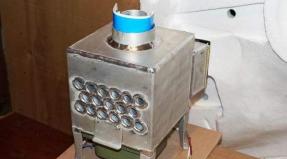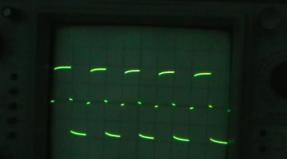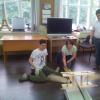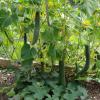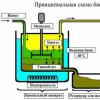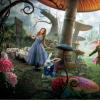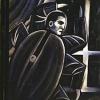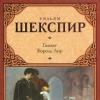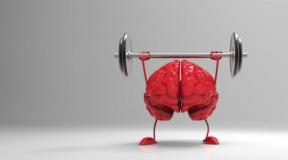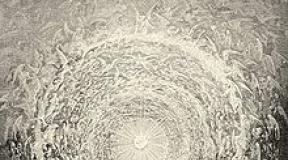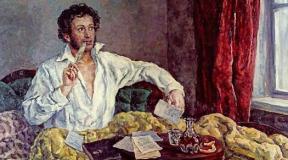Horse teeth. How to find out the age of a horse in her teeth. Features of the structure of the dentition
Stallions and Merines older than four years have forty teeth, which are divided into twelve incisors (four hysteries, four medium and four edges), twenty-four indigenous and four fangs that appear in them only by five years. The teeth are located equally in both jaws - upper and lower.
At the mares thirty-six teeth, since they do not grow fangs.
The main technique for determining the age of the horse is to assess the degree of abrasion of cutters - dairy and constant. (Milk cutters differ from permanent smaller magnitude, shape and greater whiteness.)
The foal of up to two years is sometimes called a navigation, because by this time he has not lit a single tooth.

In two and a half years, dairy hooks fall out, constant cutter.
By three years, the lower permanent hooks begin to touch the upper and are soldered. Then the gradual erasure of cups begins.
Middle milk cutters fall to three and a half years. To four years, fangs begin to appear, and the dairy glands barely hold or even fall out.
By four and a half years, dairy pains replace permanent, which by five years aligned with the rest of the cutters and begin to be stitched.
At five, the horse has all the teeth permanent, but the cups are unevenly erased.
At six years, the cups on the horses of the lower jaw are noticeably erased. In the interval of five to seven years, the cups on the middle of the lower jaws are erased.
At eight years, the cups were erased on the edges of the lower jaw, at nine - the hooks on the upper jaw.
At the same time, the chewing surface of the front teeth in the horses from one to eight years has the form of incorrect ovals lying along the jaws and in contact with the small parties.
By ten years, medium cutters are erased, and to eleven - paints on the upper jaw.
By the twelve years, the chewing surface of all the incisors of the lower jaw is erased (eaten) so much that it takes the wrong, aspiring to rounding the form.

Age changes of horse teeth.
In horses ranging from fourteen to eighteen years old, the teeth acquire the outline of almost triangles with rounded edges. To twenty years and more, the teeth in the form of longitudinal formations are drawn across the front edge of the jaw. By the way, the horses of eighteen years and older teeth of both jaws are discovered forward, between them there are large intervals.
Matching the age of a horse and man.

An important feature of the structure of the horse's mouth is the presence of bare gum, which creates a gap between the incisors and indigenous teeth. It is on the free-free gums that laid metallic life. Presenting through the reasons, the pressure of the metal on the gum, the rider and controls the horse: collects it, makes turning it in the right direction, does not allow you to be wallace.
 "You do not look at a gift horse in my teeth," says folk wisdom. In short, even if the horse was presented to you not very good, the donor only thanks and there are no complaints about it. Nevertheless, the time of time, people tried to look at their new horse in her mouth and inspect her teeth. Since they are a kind of metric certificate for which high degree Reliability specialist determines its age.
"You do not look at a gift horse in my teeth," says folk wisdom. In short, even if the horse was presented to you not very good, the donor only thanks and there are no complaints about it. Nevertheless, the time of time, people tried to look at their new horse in her mouth and inspect her teeth. Since they are a kind of metric certificate for which high degree Reliability specialist determines its age.
Younger than its years in determining the age of the teeth, it seems a horse with particularly strong, so-called "pitted" teeth, which are very resistant to erasing.
It is very difficult to determine the age of a horse and up to five years, if it has an improper closure: carp or whinge teeth.
Karp's teeth are when the teeth of the upper jaw come to the lower and the inner part of the wind enamel.
Shutch teeth have a different configuration. Here the lower jaw is issued forward, the lower teeth internal part of the wind enamel.
Determination of the age of a horse on the teeth after twelve years, even experienced specialists can not always make accurate, and, if there are no metric data, they say about such horses: older than twelve years.

Comparison of the Jaws of Horses and Man
Horse teeth are one of the strongest pieces of her body. They are used to capture, attack and protect, absorb and grind food. With their help, you can even determine the age of the horse. What teeth do it have and how to find out how many years old is the animal, - talk about it and other important items further.
The teeth at the horse are quite strong, as they help her to get and knead the food throughout the life, to defend themselves and their offspring. In their forms and position, they are divided into cutters, fangs and molars. More details on all their functions you will learn further.
number
Important! Although the stallion is 4 fangs, they do not function in any way, because they do not participate in eating food. Only the incisors are involved, with the help of which the horses are cut off, and they are chewed by rooted.
Views
As with any animal, a horse has four main types of teeth. Each of them performs its functions. All together they form a toothiard arcade: upper, lower, front and back.
Cutters
Each horse has 6 upper and 6 lower cutters: hooks, paint and medium. The hooks are located in the center, then the average cutters go on and, accordingly, around the edges - color. The cutters are also divided into dairy and constant (longer or yellow, they are a little more).
In the youth, the cutters are located in a semicircle, and already in more adult age they straightened, also at the old horse the teeth begin to perform ahead and are located under an acute angle. Check out the peculiarities of the anatomy of the horse as a whole and with the structure and possible problems of the eyes, limbs, hoofs, mane, tail.
Fangs
Fangs grow only at stallions - 2 from below and on top, the mares are usually not growing. In rare cases, they may appear, but develop weakly and practically do not grow. It is impossible to determine the age of fangs, as they may appear in 2 years, and in 5 years and even at 8.
Fangs are located near the cutters and with age are moving a little from them, turning away from the front teeth. Every year the upper steam is increasingly erased, and the bottom can be lengthened and blurred.
Premolars (first indigenous)
Premolars are considered the first rootes - they grow only 6 pieces. First, dairy appear, which are later replaced by constant teeth. The change begins at the age of 2 years and usually ends to 3 years.
Did you know? The horse's eye is not only more than other animals, but they can still move independently of each other. An animal can see a panoramic picture. But to concentrate on some particular image it can only turn the head. And also the horses see a color image.
Molars (indigenous teeth)
The indigenous teeth are sometimes called conquering, since only these animals appear 3 permanent indigenous teeth on every branch of the jaw (in all of them 12). They help polish coarse or large food along with premolars.
They appear at different ages and unevenly: the first usually grows to 10 months, the second - by 20 months, and the latter may appear in 3 years.
Dental Change Horse
Some teeth have a foal from birth or appear in the first week of life. Usually it is a couple of hook (first cutters), fangs, if it is a boy, and premolars. Further in the first month, medium cutters appear and then the paint.
In front of the change of dairy teeth, 8 molars appear at the foal, the period of their growth is 9-10 and 19-20 months of life. The replacement of teeth also does not occur immediately, but by stages. The chairs are changed first, permanent premolars are growing after them.
Learn than preferably feeding a horse.
Caring for teeth
Teeth need to be especially careful examination and care. If there are diseases or problems, they may seriously affect the state of the animal, interfere with eating, cause pain. Problems are considered to be teeth growing incorrectly, fragments of knocked teeth, which can enone in the gums, worn or embroidered and teeth with inflamed devices.
Signs of problems with teeth are:
- difficulties with food and chewing, abundant salivation;
- unpleasant and sharp smell of nostrils and oral cavity;
- excretion with untapered food particles;
- nASO ECONOM and abundance;
- an animal becomes nervous, restless and naughty.
Since the horses have a problem with the erasing of the teeth, which in conditions of detention in the stable or the farm occurs unevenly, you need to constantly maintain their sharp ends.
Important! If the pet behaves restlessly, refuses to eat, it can talk about problems in the oral cavity. It is very important to find out this as quickly as possible, since the horses are very quickly getting used to pain and after they may not show that they are worried about. Inspection of teeth must be carried out constantly and regularly.
If this is not done, the pet can bite your lip or break through the gum during chewing. Proper inspection and teeth care provides a specialist - the veterinarian has all the necessary tools for this.
Why saw teeth horses: video
Vices and anomalies
The most common problem is unnecessary teeth or so-called wolf. They appear at any age and cause a lot of discomfort and painful sensations. As they appear without a pair, they injured the oral cavity and often cause inflammatory processes.
Wolf can fall out - they have no alveol, so there is a small connection with the jaw. But most often their mechanical removal is required. In this case, it is best to contact the veterinarian, as it has special equipment for this.
Did you know? The horses have a very sharp smell. Previously, riders and owners for better management necessarily lubricated hands aromatic oilsSo that the animal does not feel the smell of sweat from them. In addition, the horses do not tolerate the smell of blood. Very often, the horses on the teeth appear all sorts of cracks, sometimes there are also dorms. The causes of such pathology may be injuries, improper care and nutrition. If the animal begins to take less food or it refuses at all - this is one of the bright signs of the development of painful and pathological changes.
Often, gingivitis and glossitis are accompanied by problems with teeth due to the lesion of the mucous membranes. Cracks on the teeth must necessarily process, and dental fragments are deleted. It is best to call for this specialist, as it may be needed additional processing medical means and antiseptics, if the lesion is large.
Caries is another problem that appears as a result of cracks in the teeth. If they do not proceed in time, the lesion spreads not only on the teeth, but also on the pulp and the gums.
Pathology is manifested by chewing disorders, poor smell and abundant salivation. Naked cavities and pits appear in the teeth.
If the teeth are amazed by caries - they are best removed, especially if the horse is old. Cleaning the oral cavity is also practiced by a special cement that removes raids and caries.
How to determine the age of a horse on the teeth
The gradual change of teeth makes it possible to determine the age of the animal. Usually, for this you need to look at the cutters, since it is they who change along a clear scheme and are very changing with age.
Important! The diagnosis and definition of age should also pay attention to the lifting, pagan and driving surface. Browsing not only teeth, but also cups, their form and quantity. In determining age, they are focused on periods of shift of the dental system: the appearance and erasing of dairy cutters, the teething of constant incisors, erasing their cups and changes in the forms of rubbing surfaces.
Milk teeth are much less permanent (about twice), they are much white and have blasting forms (the gums fit in such a way that a peculiar neck, like a blade).
Find out what the distinguishing features of the horses of the breeds: Soviet heavy truck, Traken, Frisian, Andalusian, Karachai, Yakutskaya, Falabella, Bashkir, Orlovsky Rysak, Appalusa, Tinker, Klepper, Altai, Donskaya, Hannover, Tereskaya.
In the first 2 weeks of life, the foals appear dairy cutters (the top appears faster than the lower). At the age of 1 months, the average cutters cut through, and by 7 months, extreme appear. Cups on the hysteries are erased by 1 year of life, on medium-sized cutters - at 12-14 months, and on the extreme - for 2 years.
By 2.5 years, dairy cutters begin to fall out and completely replaced by constant teeth by 5 years. On the lower hysteries, the cup is erased in 6 years, in the middle cutters - for 7 years, and on the extreme - by 8 years.
On the upper teeth, the cups are erased slightly slower, usually for 9 years on the hooks, about 10 - on medium-sized cutters and sometimes more than 11 years is required in order to stroke the surface.
Did you know? In the ancient times, white horses were sacrificed to the seas of Poseidon. He was considered not only the patron of the seas and oceans, but also the creator of the horses themselves. Animals were treated in the sea and believed that it would bring good luck. When determining the age, it is also important to take into account other factors, such as the fact that pregnant women can change the teeth, the dry climate can accelerate the shift of the teeth, and the rude feed contributes to their greater erasing.
When using a horse in various kinds of work, a lot depends on the age of the horse. It is known that the moment of complete performance of the horse comes when the growth of bones ends. Animals used for work prematurely - in underdeveloped state, become inoperable before the usual term.
Since most of the old PLIs of very young animals are unsuitable for the production of works that require high energy costs, the determination of the age of the horse can be set as far as its age is productivity. Therefore, the importance of determining age is obvious.
The most faithful way to determine age - on the teethSince all changes in their horses occur with greater correctness, sequence and in more periods than other animal species.
In adult stallions and merinms on both jaws of 40 teeth, of which 12 cutters, 4 fangs and 24 root tooth. The mare has only 36 teeth, since the fangs in most cases are absent, and if there are, then rudimentary. In each teeth distinguish: crown with a cup upstairs (on the cutters), shaika - the middle part of the tooth closing the gum, and root - fortified in the jaw bone well. The bone base of the tooth consists of three different substances: dentin, cementand enamel.
The main mass of the tooth is dentin - quite solid, with difficulty is a mixed substance. Inside dentin there is a cavity filled with loose cloth, the so-called dental fleet or a pulp, which is rich in nerves and blood vessels penetrating into the cavity of the tooth from below through the root channel hole. The crown outside to the neck and a cup are covered with a very dense enamel substance, and a part of the root sitting in a dental hole consists of a substance having similarity similarities with a bone and called cement.
From the first days of birth at the horse, the so-called first baby teethwhich are then erased, fall out and are replaced by constant within a certain period. Milk teeth (milkmen) are less, shorter, whiter and on the border of the crown with the root have a narrowed neck (Fig. 1). A steady tooth is yellowish, longer and more dairy, a cup of it is much deeper, the front wall of it is above the back, so it is also starting to wear back.
In determining the age of the horse in the teeth, they are guided by the timing of teething of dairy and constant teeth, erasing the cups on the cutters, as well as changes in the shape of erasing surfaces. Among the 6 cutters on each jaw distinguish: hooks - inner pair of front cutters, medium cuttersadjacent to the hooks and owls - Extreme cutters.
Torn the foals usually with unlit even cutters. Most often, the hooks appear in the first 5 - 6 days by birth. At the age of 30 - 40 days, milk medium teeth appear, and at 6 to 9 months - the paint. Approximately aged 1 to 1.5 years at dairy croups, the cups are completely erased. For two years, cups are erased on medium milk teeth, as well as often on the glands. In 2.5 years, dairy hooks fall out and constant are dispersed instead.
In general, it is believed that from the moment of the dedication of a permanent cutter before erasing the anterior higher edge of the crown of the period of time is 6 months. Then before the erase of the rear edge, the crown is held for another six months. From here and derived, the following rule to determine the age of the cutters, counting from the moment of changing the teeth: the change of hooks aged 2.5 years; The upper and lower hooks grow to contact between themselves and begin to erect their front edges of the crowns in 3 years (Fig. 1); The rear edge of the crowns in 3.5 years begins; At this time, there is a change of medium incisors, which then grow to contact with each other and the erase of their front walls begins to 4 (Fig. 2), the rear by 4.5 years; Changing the glands aged 4.5 years; The glands grow to normal and the erase of the front side of their cups is erased to 5 years (Fig. 3); The front walls of the color erased to the level of the rear walls to 5.5 years. Fangs appear on the stallions for 5 years.
From 6 to 12 years old, the horse's age is learned on the erasure of the cups: on the lower cups of the cups are erased to the base for 6 years (Fig. 4), on medium-sized hysteries by 7 years, on the edges to 8 years (Fig. 5), on the upper hysteries from 9 to 11 years (Fig. 6).
Consequently, all cups of all the incisors will be erased (but their traces in the form of enamel will still remain) by 12 years.
Since 12 years old, the age of the horse can be determined in the form of an erasing surface of the incisors: rubbing the surface of the lower hooks will be rounded in 12, medium; 13, dyeing in 14, upper hooks in 15 (Fig. 7), average in 16, coloring at 17 years.
In the period from 18 to 23 years, inclusive, starting from the bottom hooks, the triangular shape of rubbing surfaces appears (Fig. 8), and from about 24 years old these surfaces take the reverse form.
Observations have shown that the teething of dairy teeth, their replacement and erasure have a great influence of the breed, individuality, gender, climate and food properties. In the early breeds, all the specified deadlines are accelerated. The state of pregnancy sometimes delays the rubber of constant cutters for almost a whole year. Dry warm climate speeds up the appearance of teeth. Rough food accelerates erasing teeth. Occasionally, horses with such a dense mass of dentin are found that the latter is almost not waste, (such teeth are called "resin"). More precisely, the horse's age can be determined up to 9 years, since after this age the erasing of the teeth on the upper jaw passes less correctly than on the bottom. At old horses, age can only be determined approximately within the errors from 2 to 3 years.
Horses, having a vicious habit of cladding and bite, are recognized on a strongly erased front edge of the cutters.
There are other ways with which you can adjust the horse age until a certain extent. So, in the form and development of the skull, growing animals can be judged by their age. The forehead is more convex, the facial parts are less developed and generally head outlined by softer lines than in an adult horse of the same breed. The lower edge of the jaw at the foal is rounded and the jaw is brought closer. The facial part of the skull is strongly developed only after changing the teeth, when all the skull lines begin to perform significantly sharper. In young horses with an increasing growth height in the withers in relation to the length of the body, much more than quite adults. As it approaches the old age, the subcutaneous adipose tissue begins to disappear and to 12 years of the enemy's depressions and the throat deepen and the lower edge of the jaw begins to sharpen, the muscles of the lips weaken and the lower lip begins to be removed.
At the horses of the dark suit at the age of 14 years old on the above eye arcs and chin, gray hairs appear, every year slim and dry housing is increasingly lost, becomes noticeable backrest; Belubo, especially factory mares, is done red. To the old age, the skin becomes more rigid, hair is losing glitter, movements become sluggish and uncertain. All specified signs, depending on the breed and individuality of animals, are often manifested with insufficient sharpness and not at the same age and to accurately determine the age are insufficient.
Strong teeth
The nature of the animal, features of the feed and form of bite are influenced by their condition. Breed hill compared with usual have a firm bone mass, so strong, respectively. Teeth too.
If the top and bottom of the horse's teeth are located incorrectly erasing in will occur unevenly. At the foot of the stern, along with the grass, the horse chews stones and sand, which increases the destruction of the teeth. Therefore, two horses of one age teeth can be very different.
In horses, 12 incisors and 24 indigenous teeth are distinguished. Stallions, unlike mares, have 4 fangs. Horse teeth cutters are designed to cut grass, and the indigenous teeth for chewing it, the fangs do not participate in the process of food.
Normally in stallions of 40 teeth, and the mare 36. The teeth are located on the arcuate line, which is called arcade. Distinguish the upper arcade and lower, which is less than the size.
 Dental location scheme
Dental location scheme The dental cavity is filled with a mucosa with vessels and nerves. All the necessary nutrients in denin fall from blood pulp vessels. The root of the tooth is called its hidden part, which is in the gum of the horse, and visible as a whisk. Channel passes through the dental cavity from the root.
As the tooth is erasing, the enamel begins to go inside and resembles the bottom of the bottle. Therefore, scuffing a part of the erasing surface of the tooth can be considered more white enamel and gray bone substance. The maximum depth of the cup is achieved only on the upper cutters.
At the bottom of the deepening lies cement, after erasing the cup, its inner enamel layer surrounds and forms a trail of the cup. The horse's teeth outside are covered with enamel, and the root of the cement that captures the entire crown and a cup.
 Erasing teeth
Erasing teeth In the process of erasure, you can select five layers of the surface of the tooth:
- internal cement;
- external cement;
- enamel layer adjacent to the internal cement;
- enamel layer adjacent to the outer cement;
- dentin, located inside.
Cutters
Of the 6 top and 6 lower horses, the horses, paint and medium teeth are distinguished. Two hysteries are located in the center on both sides of them are average, and on the edges of the paint.
Different milk and constant cutters. Unlike dairy teeth, constant larger and yellow in color.
A young horse has a semicircle to form a semicircle, gradually taking a flat shape in an adult animal and straightening to old age. The location of the upper and lower teeth to each other with age is also changing. The young animal jaws resemble ticks, but with age, the cutters come forward and arranged each other under an acute angle.
Fangs
Fangs in horses grow only in stallions, two top and bottom. At the mares in rare cases, they can grow, but they will be poorly developed.
By fangs to determine the age of the horse is impossible. Ideally, they are broken in 4-5 years, but it can occur both in 2 years and in 8 years.
Only cutting fangs are pointed, on the side facing the language of their surface rough, and outside smooth. First, the fangs are located next to the cutters and addressed them, with age they move and turn away from the front teeth. Inner roughness is gradually smoothed. The upper fangs can be stealing up to the gum, and the lower winds become longer and blinking.
An old horse can be distinguished by the presence of wine stones on the fangs.
The horse has 6 upper and 6 lower northern indigenous teeth. From the cutters and fangs they are separated by a toothless section of the gums.
The first three upper and lower indigenous teeth are changing, the rest are constant. The first and second milk native teeth change in 2-3.5 years, and the third - at 3.5-4 years.
 Horse teeth by year
Horse teeth by year Before the first indigenous teeth, called small indigenous, grip "Wolf". These tooth-shaped formations should fall out with the first dairy indigenous teeth, but they can be preserved to mature age.
Trenzel, who is in the mouth of a horse and lies in his toothless part, can rest in the "wolf" and cause an animal pain.
On the upper jaw, the root teeth of the horse have a cup, there are not on the bottom.
Change and teething from horse
Most often, the foals are born to notget. The first milk teeth appear during the first week - this is the hooks. Then grow medium teeth, and by 9 months - color.
The change of dairy teeth for permanent should occur at the age of 5 years. In 1 year, the horse has temporary cutters, then in 2-3 years the central cutters are replaced by constant. By 4 years, medium permanent cutters are dispersed, and after them the paint. The last to change the extreme cutters.
Dairy fangs in stallions are broken in half a year and change at the age of 5 years.
The timing of teething and shifts of teeth depend on the type of feed, the rock breed and the individuality of the animal.
Horse teeth especially with age require constant care. Patients teeth interfere with the horse to chew food correctly. An animal pain can cause:

- teeth growing in the wrong position;
- fragments of knocked teeth in the gum;
- worn teeth;
- inflamed gums or teeth.
The problems with the teeth at the horse can be revealed for anxiety of the animal, the failure of food, irritation. But often the horse gets used to pain and does not show anxiety. Therefore, it is important to regularly examine the mouth of the animal.
Specialist in the following features Easily reveal problems with teeth:
- an animal is experiencing difficulties with fierce food, salivation increases;
- present nasty smell from the mouth and nostrils;
- in the manure there are undigested food particles;
- the horse does not listen to the teams of the rider, nervous;
- nasal swelling and isolation from it.
Food of horses contained in the stable differs from pasture. There is uneven erasing of the teeth. Sharp ends need to cut, otherwise the horse can bite or cut the lip.
Young animals need to remove the "wolf" on time, which can press the Trenzel.
High-quality inspection and care of the horse's teeth will provide a veterinarian. It uses a special rotator in the work, and restless animals give a sedative.
Video: Cool teeth
The health and performance of the horse directly depend on feeding, and not only from the quality of feed and balance of the diet, but also from the proper operation of the digestive system, including from the state of the teeth. So, pay attention to the teeth of the horse should not only in order to determine its age.
The poor condition of the teeth can disturb the horse so that lead to the loss of appetite, impaired work and diseases of the stomach. To avoid serious problems, more attention should be paid to signs indicating those or other pathology of the teeth.
In any case, the reason should be sought in your teeth? Various anomalies of teeth and their diseases are primarily reflected in the chewing process. Patient Animal will be happy to grab the proposed feed, but chews it slowly, the side movements of the jaws are produced hersally and often unevenly. The last sign can indicate which side of one of the jaws should look for an affected area.
In the literature, interesting observations of how horses suffering from teeth diseases are eaten one or another. So, when the horses offer the hay, she first eagerly accepted him grab and chew. But since the chewing is difficult, the horse cannot swallow the captured beam, and it falls out from his mouth. The first unsuccessful attempt does not stop the animal, and the horse again takes the hay, trying to chew him and drops back. So it can be repeated several times until the horse is tired and will not lose interest in the stern. If the horses offer Oats, she dies for a long time in the feeder, and then he begins to beat the oats with large portions, insufficiently chewing.
If the horse leaves no food in the feeder in the feeder (with a constant norm), if you notice a breakdown of chewing movements, an unpleasant smell of mouth, or during work, the horse is atypically holds the head of the Block, leads it restlessly, tries to free himself from Trenzel - all this should be The reason for inspecting the oral cavity and the state of the teeth. Often, when inspection in the oral cavity, the remains of food are noticeable, under the influence of microflora, acquiring a greenish color and an unpleasant smell, a brush pocket on one side can be filled with poorly faded feed. In this case, it is necessary to clean the oral cavity from feed residues and only then make a detailed inspection.
How many teeth have a horse?
The horses distinguish with cutters and indigenous teeth: cutters - 12 (6 - on the top and 6 - on the lower jaw), indigenous 24 (6 - on the lower and upper jaws of the affairs side). In addition, stallions have 4 fangs, there are no fangs. As a result, the stallions in the norm should be 46, at the mare-36 teeth.
Dental development anomalies
Most often, horses occur to the wrong erasing of the teeth, in which they take several forms: sharp, staircase, saws and scissors (in some sources there are much more forms of incorrect teeth erasing).
The uneven erasing of the chewing surface of the native teeth of the upper and lower jaw is due to the row of others, congenital features of the anatomy. In this case, sharp teeth are obtained when outdoor surface Upper teeth and sharp edges are formed on the inner surface of the lower teeth. The sharp edges of the upper teeth are wounded with the gums, the sharp edges of the lower teeth wound the tongue, the sky, the mucous cheek. When examining a horse with such pathology on the mucous membranes, the language, the wounds can be detected on the gum, and even ulcers, in case the horse has long been without attention. At the same time, the horse is experiencing additional difficulties when chewing, since the feed is easily clenched with a too inclined surface of the tooth. In the formation of sharp horse teeth, the spill of sharp edges will help, which is better to trust a specialist.
Due to the different density of the teeth or the force of exposure along the length of the arcade, a staircase or saw-shaped erasing of the teeth is formed, when the chewing surfaces form a number of steps, and individual teeth can stand space and incorrectly, at an angle to each other. To the extreme degree of pathology, middle teeth of the lower jaw can be erased to the level of Alveol, so the horse is experiencing severe pain and there is no coarse feed.
Excessively oblique erasing of the chewing surfaces of the upper and lower jaws leads to the fact that the teeth begin to contact not chewing, but side surfaces. Most often, this is due to the congenital asymmetry of the bones of the skull, in particular a narrow lower jaw. In the literature, such a description of the extreme degree of this pathology is found: "The chewing surfaces of the teeth of the right side on both jaws are so much bezed that the dental arcades are located in parallel to each other and crossed out like scissors. As a result, the chewing surfaces of the upper and lower teeth could no longer come into contact with each other, but the teeth continued to grow, and the lower jaws with sharp edges of their teeth began to touch the upper heaven and hurt it. " In such cases, it is possible to help the horses by leaving the most protruding teeth that again it is better to trust a specialist.
Among the anomalies of teeth recorded by horses, there are many curious cases. Among them, congenital uglyness of the jaws, in fact, the curvature of the bones of the skull. Interestingly, with such a deformity of the horse is capable of living long and safely. The observation of the Arab stallion was recorded, who was born with a similar deformity, lived safely for 26 years, produced 19 foals, of which only one inherited a deformity from his father.
Often, horses have a superfluousness of the teeth (in other words, unnecessary teeth). Recall that in the normal stallion in the stallion, there are 40 teeth, at the mares - 36. With an abnormal development of teeth may be greater. The case was recorded when the stallion had a double amount of incisors - on top 12 and below.
The opposite phenomenon is recorded in the literature: the lack of teeth, and there were innate cases of lack of teeth, which, apparently, are genetically inherited signs. As an example, a horse is given, which has absolutely absent cutters on the upper jaw. At the same time, she was alive and great, only ate fodder like a cow.
A lot of examples of finding various tumors of solid teeth tissues, sometimes reaching impressive sizes. This is so described tumors weighing 700 grams and even 1 kilogram.
Finally, known cases of extracts foreign languages From teeth or space between teeth. As foreign bodies, the nails or pieces of wood appear most often.
Violation of the change of teeth
The change of dairy teeth on the roots of horses is often delayed between the ages of 2 to 5 years. There are cases of delay delay to the change of teeth up to 15 years of age. Milk tooth can be abnormally rotated, tilted in one direction or another, but at the same time being in its place. In this case, the tooth of chewing becomes moving and horses the pain, between the tooth and the gums fall the feed remains that are seal and can cause inflammation.
Often the horses have the presence and dairy, and the indigenous tooth of the same name at the same time. In such cases, the cutting indigenous tooth can change its normal position in relation to the gum. The literature provides many examples of such phenomena. So a four-year-old foal was described a permanent cutter on the lower jaw, which grew horizontally ahead and constantly injured the lower lip. Or is given as an example of a three-year mare, in which one of the cutters of the lower jaw grew by 4 mm behind the dental ridge and wounded the tongue, so the horse could hardly eat. In all cases, the launching of the change of dairy teeth are the latter to be removed under the control of a specialist.
Dish diseases
Of the diseases of the teeth of horses, the first place is occupied by caries (the trivial name "coost"). By analogy with the "human" caries, a small gray or brown appears first, soon a stuffing speech, on the site of which solid tooth tissue breaks down and a slight defect appears. Barely started, the pathological process quickly progresses, destroying the tissues of the tooth. Subsequently, a deep cavity is formed, painted in black or brown color filled with residues of feed.
According to some data, the caries is more likely to be amazed by the upper indigenous teeth, less often - the lower and extremely rarely cutters. With large volumes of carious cavities, the tooth can split, as much as the formation of a dental fistula.
With caries, the horse has the difficulty of chewing movements, abundant salivation, an unpleasant smell of mouth.
When assisting an animal, depending on the severity of the damage, the patient's tooth is either removed, or treated the carious cavity with the appropriate drugs for the prescription of the doctor.
Teeth are bone-enamel organs for capturing and grinding feed. Teeth horses They differ in that:
- all of them are long-lean (and cutting, and indigenous);
- in men's individuals, as a rule, fangs are located between the incisive and coin teeth, women's fangs can be as an exception;
- cutting teeth 6 lower and 6 top. Indigenous teeth - 24 and 4 fangs at stallion or Merin. Thus, the stallion has 40 teeth, and at the mare - 36, as it does not have fangs.
When closed, the chewing surfaces of the cutting teeth coincide. The chewing surfaces of the native teeth are beveled, and the peat of the feed occurs not only with the side movements of the jaws, but also with compression. The brushed edges of the chewing surface of the upper native teeth are pointed on the side of the chewing surfaces, the edges of the chewing surfaces are fed to the tongue. It is possible to injury and tongue tongue (in horse breeding it is recommended to periodically dull the sharp edges of the indigenous teeth with a special rashpil).
The chewing surface of the teeth in the horses folded. In the process of erasing, the teeth are extended from the dental alveoli, while the shape of the rubbing surface and the angles of closure of the cutting teeth changes.
In the formulas designate teeth with the first letters of the International Nomenclature: Cutting Teeth Letter I - Incisivi, Fangs C - Canini, P - Premolars, Premolares, Summary, First Native, M - Molars, Molares, Mooler, Schever. Molars do not have dairy predecessors.
The number of upper teeth on one side of the oral bands is denoted in the numerator, lower teeth - in the denominator.
Formulas of the teeth of horses:
- dairy - I 3 C 1 p 3 / i 3 C 1 p 3 × 2 \u003d 28,
- permanent - I 3 C 1 P 3 m 3 / i 3 C 1 p 3 m 3 × 2 \u003d 40.
Foals born Without cutting teeth on the surface of the mucous membrane of the oral cavity. There are low teeth of dairy premolars. Through 5-10 days After birth on the surface of the mucous membrane, the luminous edges of the hooking teeth appear.
In age 30-40 days The average dairy cuts are cut down, rumbles over the dears of the crown of dairy premolars. In age 6-7 months Out of color.
IN 10-12 months The first permanent molar (fourth indigenous) is cut. There was a cup of dairy hysteries and often on medium-sized cutters.
The drawing of the root stars (dentin) changes from the exhaust-ovo-oval to a rounded and point: at 7-10 years old the shape of the root stars in the form of a strip; at 10 - 12 years - shortened bands; at 13-14 years old, oval form; In 15 - 16 years - the root risk of a round shape and is located in the center of the rubbing surface.
Many have heard the saying "do not look at a gift horse in the teeth", but not everyone knows that it means. Let's figure it out what they mean in the life of the horse and her owner's teeth. How many teeth have a horse should be in line with the norm? After all, it is for the teeth that you can determine the age and health status of the horse, and, based on this data, determine it.
Looking at the teeth, you can find out if a horse has a problem with digestive system. Diseases and anomalies in the development of teeth affect the process of chewing food by a horse, which affects its health entirely. The horse's teeth serve it not only for chewing food, but also to protect or a possible attack.
It is interesting! In the stallions of the teeth approximately 40 (12 incisors, 24 indigenous and 4 fangs), at the mares - 36 (due to lack of fangs).
Features of horsepower:
- among all herbivores, the most difficult teeth are of horses;
- the teeth of these nonpospeps grow in Alveoli, standing into arcs or arcade;
- the body of the tooth itself consists of an invisible part - root, and visible - a whisk (spine with a whisk connects the channel with vessels and nerves);
- some non-parqual dental coats have extraordinary strength - such teeth above ordinary and look darker;
- on the jaw, the bad habits of the horse are affected - bite or balobiness language;
- between the incisors and the main teeth in the normal horses there is a space without teeth;
- as the tooth is abruptly, the superfoot enamel becomes concave, like a bottom of the bottle.

It is interesting! Blood hill are the owners of bone mass, which is harder, compared to usual, so they have a stronger skeleton and jaw.
In abrasion, dental layers are determined:
- internal and external cement;
- internal and external enamel;
- dentin (located inside the tooth and is 80% of the mass of the tooth);
- pulp (connecting material, nervous endings, vessels)
- toothproof (surface);
- enamel folds.

It is interesting!70-80 chewing movements per minute makes a middle horse, highlighting up to 50 liters of saliva.
The procedure for changing teeth and their types
Milk teeth in nonpospeps appear at the age of 1-2 weeks (sometimes the treasure foals are already born), and they are replaced by rooted aged 2 to 5 years.
Baby teeth:
- bright snow-white color
- have a wide spanwood crown,
- noticeable neck
- small size
- almost no cement,
- uniform surface, very small grooves.
The horse's teeth are in the growth stage of the whole life, and, reflect, they are erased, like all herbivores. Therefore, the teeth establish the age of horses. In order for animals with her teeth, everything is fine, they need to feed them as close as possible to how the horse feeds in the wild. She should have a hard feed: hay and straw. And they chew these rough feed horses should be a maximum long throughout the day. The horse usually eats always, when it does not sleep, but she spends only 4 hours a day on sleep. If you give only feed, then the needs of the horse in calories, of course, are satisfied, but the teeth do not receive the load that should be obtained in a natural environment.
Important! Permanent teeth are characterized by a yellow, larger size and have a rectangular shape, while the dairy teeth are bluish-white color, a wedge-shaped form with a pronounced "neck".

Table 1. When changing different types teeth
| Type of teeth | When changing |
|---|---|
| Cutters - front | Grow the first. In 2.5 years, dairy is replaced by constant. Two teeth in the center are called hooks. They are captured and cut. They are used to attack and protect. If the animal is young, his jaws are like pincers, with age they are fed back. Total cutters 12, 6 on top and bottom. |
| Premolars - Middle | Premolars are broken by the second, subsequently replace. Middle teeth are replaced by 3.5 years. They are mainly grinding food. Total premolars 6. |
| Owls (Molars) - Extreme Teeth | Appear last. At 6-9 months. At 4.5 years, the top three and the lower are replaced by permanent. Molars grow immediately indirect. Their function is to change the food. Total 12 of them. |
| Fangs | It is found exclusively at the horses, are shown at the age of 5, 2 on the upper and lower jaws. They first appear next to the cutters and stretch to them, but then gradually unfold in the other direction. In exceptional episodes, they appear and the mares, but they are weakly developed, and quickly fall out. |
Video - How the horse's teeth are pilated
Anomalies and villocks
The most frequent impairment in the formation of nonpartinal teeth is considered pathological and inhomogeneous abrasion.
It is interesting!Known anomalies, when the milk tooth and the main present at the same time.


Table 2. Possible problems with teeth
| View | Description | What to do |
|---|---|---|
| Sharp teeth | At the top of the tooth, sharp edges, wounded gums and animal cheeks appear, which causes inflammation and ulcers. Feed also clenches with sharp teeth, which prevents its natural chewing. | The sharp edge is spilled or spinning with special tongs. |
| Staircase teeth | Due to the congenital vices of the bones of the skull, there may be differences in dentisten density, uneven growth in different directions. This makes the chewing surfaces of the teeth uneven, and the chewing process itself is defective. In extreme degree of erasing, the tooth is missing to the base, causing the animal painful sensations. | Corrected by the removal of the most protruding teeth. |
| Pilotous teeth | Externally looked similar to the staircase, but differ in that the recesses are replaced by elevations, every protruding tooth in the upper jaw in the pair comes across a shortened tooth in the bottom, and vice versa. It occurs due to the inhomogeneous density of dental enamel. Such an anomaly causes difficulties in chewing a horse of food and causes problems of digestion. | Sticking teeth are cut off by a veterinarian. |
| Scissors teeth | The upper and lower jaws come into contact only by the sides, which does not grind food, but it does not matter. This pathology can be natural or caused by a long-term chewing one side in the presence of inflammation on the other side. Such an anomaly is unilateral or bilateral. As a result, the cheeks and lips of the horses are injured, the food is fucked between the teeth. | Subscribe with the help of a rashpil and shorten by special dental scissors. |
| Infant teeth) | The shortening of the upper jaw is natural pathology. The cutters of the lower part are fed and not in contact with the upper cutters. This leads to the injury lips and mucosa. Food is chewed not enough, the teeth are abnormally erased. | Veterinarian spills sharp edges, slightly alleviated horse meals. |
| Fortation (carp teeth) | The opposite sentence natural pathology of the shortened lower jaw. Problems are the same. | Split protruding edges. |
| Smooth teeth | Uniform, without protrusions, the surface of the teeth. It happens in horses in years. Food clenches and is little crushed. | Corrected by a special diet of crushed feed. |
| Extra (Profit, Wipes) | May appear at any age before the first permanent teeth. They deliver horses discomfort, sometimes even pain, because There are no pairs on the opposite jaw. Usually they themselves fall together with milk teeth, because They have no alveoli, and with the jaw they are not connected tight. If the Trenzel is used, it can rest in extra teeth, which causes the horses painful sensations. | If they do not fall out themselves, they are removed by the veterinarian. |
| Missing teeth | Such pathology often does not prevent horses to eat. | |
| Divergence | The teeth are diverged, and space is created between them, rarelose. This pathology is natural, or appears due to the delay of the growth of indigenous teeth, after falling out milk. The clefts between the teeth make hard fiercing food. | Corrected by timely removal of dairy teeth. |
| Convergence | Anomalous approximation of the roots of the main teeth. When chewing, food causes horse discomfort. | |
| Retention | If the tooth is located instead of a jaw row in the body of the jewish bone, it complicates the chewing of the feed of the horse. | Tooth is deleted. |
| Caries | The solid of the teeth is falling apart in a consequence of infection by pathogenic microflora, traumatic damage, vitamins and mineral deficit. | The veterinarian relief tooth removes if not - processes a special solution. |
| Pulpitis | Soft jaw cloths are inflicted as a result of launched caries or broken teeth. | Not healthy teeth Take a tight. |
| Dental | Appears over the years in many living organisms. In the launched situations, the mouth smears, the gums are painful. | Spent with special tongs. |
| Tooth tumors, extraneous bodies | Corrected by removal. | |
| Cracks and fractures | Arise due to damage. | Deleted by a specialist under local anesthesia. The mouth cavity is treated with antibacterial agents. Cracks are processed by rasp. |

Video - Removal of the horse at the horse
Establishment of the Horse Tubes
IN modern world We are more oriented when buying a horse for documents, and earlier age Horses literally up to a year, as well as her health was determined exclusively on the teeth.
In continuation of all his life, the teeth of the horse are gradually erased during feed in the sort of feed, it is evenly uniform. At birth, the foals on the surface of the cutter are located deepening - "cups".
Table 3. How to determine the age of the horse in the teeth
| Horse age | Sign |
|---|---|
| 1 year | Disappear of the recesses of the hooks |
| 1.5 | Erase on the teeth in the middle |
| 2 | Disappear on the glands |
| 5 | Milk teeth are replaced by indigenous |
| 6 | Easy cups of lower hooks |
| 7 | Disappear cups in the middle below |
| 8 | No cups on the lower edges |
| 9 | The cups of the upper hooks are erased. Formed "snaps" of the upper color |
| 10 | Disappear cups of medium teeth on top |
| 11 | No cups on top paint |
| From 12 to 16-18 years | The surface of the tooth changes the form of oval on the round. Disappear "Sounds". Sometimes in 15 years can appear "secondary snacks" |
| 18-24 | Chewing surface will be triangular |
| From 24. | Erased back to oval |
Also, the age of the horse is given "root stars". At 7-9 years on the teeth below, they look like narrow stripes of yellow-brown, in 10-14 years they are similar to the strips of oval shape, and in 15 will become a round form.
If you do not put a task to find out the age of a horse with the correctness of the year, and you just need to find out, a young horse or old, then you can lift a slightly top hand of a horse and watch the angle in which the cutters are closed on top and bottom - than he is sharper, the greater the age of the horse.
The erasing of the horse's teeth depends in many respects of the content conditions on the stable or in the pasture, from differences in feed and overall care.

Horse teeth diseases
If you notice that:
- the feed left by you for the horse will not be touched;
- she her willingly enough food, but he chews slowly and painfully;
- it has food during chewing;
- it loses weight;
- throws her head;
- highlights a lot of saliva;
- she somehow strangely holds his head;
- not listened to the usual teams;
- trying to chew food only one side;
- she has from mouth is coming unpleasant odor;
- swell his nose;
- in the manure is visible untrained food.
In all these cases, it is necessary to urgently show the horse a veterinarian, which with the help of a special rotator will examine the oral cavity of the animal and will conduct the necessary procedures using soothing or painkillers for complex cases.

What is obliged to inspect the specialist:
- External integrity of jaws.
- Chewing part of the teeth.
- Light surface.
- Top language.
- The shape of the teeth, cup.
- The presence of a dental stone.
What can disturb the horse:
- gum inflammation;
- inflammation of the tooth surface;
- fragments of injured teeth in the gum;
- incorrectly growing jaws with sharp edges;
- highly worn teeth.
As in people, the most common dental disease in the horses is considered caries. First, a small dark spot is formed, and then it grows into an extensive hole, the tooth breaks down. Therefore, it is necessary to reveal and process the starting caries with special drugs in time, and if it is launched - remove the tooth under the control of the specialist.
Important! Most often, the caries is located on the upper native teeth, on the lower - less often. Almost does not occur on the cutters.

Horse teeth cleaning - Step-by-step instructions
Step 1
The horses mouth open with the help of hands or special tools - the youth. Fix with a special retainer.

Step 2.
Assistant veterinarian fixes the head of a horse and removes the tongue to the side.
Teeth cleaning
Prevention of horse teeth disease
In order for the horse to have healthy teeth, it is necessary to comply with simple rules:
- Regular inspection of the veterinarian (2 times a year).
- Timely feeding of the acute edge of the teeth and the restoration of symmetry and balance (this procedure is completely painless for the horse).
- Tooth processing with a special solution for the prevention of caries.
- Timely removal in time did not fall out milk teeth.
- Removal of wolf teeth.

Teeth are one of the most important horse bodies. It is necessary to control their condition and in time to treat diseases.
Types of teeth
The horse allocate several types of teeth depending on their shape and purpose.
The structure of the horse's tooth involves the presence of a cavity consisting of a tissue mucosa with nerves and vessels. The necessary nutrient components penetrate the dentin from the blood of pulpish vessels. Hidden half of the teeth flowing into the gum, are called the root, and visible - a wedge.
As the horse's teeth are stitched, gray enamel will go intoward and will like a bottle in shape. Scuffing the erased parts, you can consider the whiten enamel and the substance from the bone-colored tissue. A cup of the greatest depth is achieved on the highest cutters.
Determining the age of the horse in the teeth is the most accurate among all other similar ways. To learn how to determine the age of a horse, take into account that up to 6 years old the shape of the oval cutters, in 7-12 years it is erased and round, and after 12 years it takes a triangular shape. Horse tooth formula: i3c1p3m3 / i3c1p3m3 × 2 \u003d 40. To the question of how many teeth have a horse, you can answer that the stallions should have 40, and at the mares - 36. The amount of them may vary.
Shape of horse teeth

Depending on the form, several types of horsepower are distinguished. There are cutters and indigenous. The cutters can be 6 pieces in the upper and lower rows. In the middle there are hooks, then the middle cutters go and the edges are placed around the edges. In a young age, the cutters are located in a semicircle, but as they grow up, they straighten up. In old animals, the cutters slightly come forward and placed under a pointed angle.
Indigenous teeth (molars) are also called conscons. They are needed for chewing coarse or large food. On each of the jaw branches there are 3 such molars. The first is formed at 10 months, the second - in 20, and the last one - to three years.
Premolars are the first root. They are 6 pieces. Initially, they are dairy, but then replaced with permanent. The shift begins at 2 years and lasts about a year.
Fangs are found primarily at stallions, the mares can rarely meet them. Find out the age of the animal for them is impossible, because Fangs can form almost at any age. They are accommodated near the cutters and over the years are gradually moving away from them. The upper steam with each erase is still stronger, while the bottom is blinking and increases the length.
Change and teething from horse
Most foals are born to zezless. The first milk teeth, they are hooks, cut through the first week of life of the animal. After that, medium-sized toys are formed, and a color appears closer to 9 months of life.
Milk teeth are completely changed to about 5 years permanent. In 1 year, the horse has temporary cutters, and in 2-3 years, constant are formed instead of central incisors. By 4 years, constant middle cutters are formed, then the paint. Later, all the most extreme cutters change. In stallions, dairy fangs are broken at the age of 6 months and change upon reaching the five-year-old age.
The period of shift and teething may vary depending on different causes and factors. In particular, they include:- breed of an animal;
- variety of feed;
- individual features of a horse.
Caring for teeth

- wreckage of knocked teeth, dumped into gums;
- inflammation;
- incorrectly growing teeth;
- their worn out.
- unpleasant smell of nostrils and mouth;
- nervousness, failure to comply with the rider orders;
- food chewing problems, enhanced saliva selection;
- the presence of untraisted pieces of food in manure;
- discharge from the nose, swelling.
Horses, which are contained in the stables, are not powered as pasture animals. They are unevenly erased by teeth. It is necessary to cut off their pointed tips, which animals can cut the lip or bite it.
Teeth diseases and treatment
The main disease of the horsepower is the pumps. They develop in cases where top jaw wider bottom. Because of this, the teeth begin to wear not as it should be, the mouth is filled with pointed edges. An animal becomes painful to chew food, and it swallows it entirely. In the mouth, due to the incessant cuts, non-healing ulcers are formed, which are constantly increasing in size.
This disease makes it difficult to operate the animal. Upon tension, reel or squeezing occurs, pressing damaged parts of the mouth to the gums. This causes unbearable pain in which the horse becomes almost unable to execute the rider commands.
It is necessary to constantly control the process of forming pumps to prevent it. If they have already appeared, it is required to cut their sharp edges. Correct the irregular shape of the jaws of the animal is not possible for physiological reasons.
Some horses in the mouth grows their teeth in those places where they should not be. They are called wolfges. They do not represent any benefit and only cause acute pain in bite. They also affect the formation of pumps. It is impossible to cure this defect, so the wipes are customary.
With permanent injuries, rotting and carosis may occur. In particular, the unless space near the first root is constantly experiencing the effects of iron. In this place, an ulcer is formed, which in the absence of treatment provokes inflammation of the periosteum. This, in turn, will cause rotting the jaw. It can be determined by a tumor, unpleasant, sealing jaws, changed animal behavior.
This disease is treated surgically. Lowering the place of rotting is carried out cross-piece incision and remove all residues of dead fabric. The wish are washed and cleaned, and the resulting hole is trembling. Gradually, it overcomes a new cloth.
You must know the dental features of the newborn foal. For several days and up to several weeks after birth, the first dairy teeth foal begin to cut through. Central cutters, as a rule, appear first.
- Milk teeth are smaller and white permanent incisors, they have a shape of a blade on a thin neck (adult teeth have a more homogeneous oblong shape).
- 9 months. By 9 months, the foal has a complete set of dairy teeth, but not all the teeth grow so to wear.
Dental features of more adult foals and young horses. Determine the age of the horse under 5 years old can be quite accurate. Features of this period: the appearance of all dairy teeth and their replacement by constant adult teeth by 5 years.
- 12 months. All milk teeth are present, but the angular cutters are not so long to wear (they do not touch the teeth from the opposite side). Milk teeth are white in the shape of a blade on a thin neck.
- 2 years. Corner cutters grow to such a length when they can come together with teeth from the opposite side, which is why they are in a state of wear (used for cutting grass and chewing).
- 3 years. Central milk cutters change to adults. Adult teeth are larger in size, more homogeneous and do not have an obvious neck. They are more yellow / cream than dairy teeth.
- 4 years. Central and intermediate cutters are already constant, but the angular cutters are still dairy.
- 5 years. All cutters are permanent.
Dental features of horses aged 5 to 20 years. It is possible to determine the age of an adult horse, if you take into account several factors, for example, labels on the chewing surface of the incisors, the angle of the teeth, various grooves in enamel and hooks.
- 5 years. Adult teeth worn. The cutters converge under almost a vertical angle. Teeth are in vertical position, they are oblong shape. The chewing surface of the cutters is concave. The shape of the cross section is oval.
- 5-9 years old. There are bowls on the chewing surface of the cutters. They grow to 9-10 years old, leaving the light "marks", which will be lost in 12 years.
- 7 years. The upper corner cutter has a hook that hangs over the bottom of the cutter. This is a seven-year hook, because it disappears at 8 years old. However, it can not always be found, it may be present on one side of the mouth, but not the other.
- 10 years. Galveun's groove appears as a brown sign on the lines of the gum of the upper corner cutters. At the age of 11 years, the chewing surface of the cutters is flat. The shape of the tooth in cross section is round. Stars appear (at 8 to 10 years) on the chewing surface of the incisors and become more distinct with age.
- 15 years. The cutters occur at an angle of 90 degrees. The teeth are elongated, the edges have a cropped view. Galwear's groove is reduced by half to the upper angular cutter.
- 20 years. Galveun's groove disappears from the gum line of the upper corner cutter.
Dental features of old horses (20 years and older). For this age, long cutters are characterized, which are under an acute angle.
- Yellow or brown teeth. The cutters are very long and under a strong slope. The upper and lower cutters converge under an acute angle. Cutting surface of cutters triangular.
- Galveun's groove is absent on the gum line and completely leaves for 25-30 years.
- After 25 years, some teeth can relax and start falling out.
